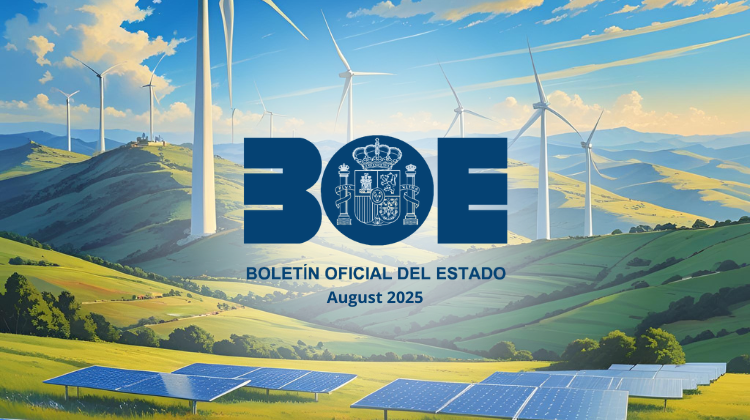In August 2025, the Ministry for the Ecological Transition and the Demographic Challenge published 11 administrative resolutions on renewable energy in the Official State Gazette (BOE), processing a total of 899.925 MW. The technologies assessed were photovoltaic, storage, and wind, with a strong focus on hybrid and public utility projects.
Among the most significant approvals is the progress of Iberdrola, which added 180 MW with its Azután I, II, and III photovoltaic plants, all located in Toledo, receiving administrative prior authorisation. Zelestra also secured full permits for SPK Trujillo, a 156 MW solar plant in Cáceres, while European Energy was authorised to build Pioz RD2, a 26.16 MW plant in Guadalajara and Madrid.
Another notable development was the environmental approval of the BESS Cuevas storage project, with 55 MW, promoted by Sungrow in Castellón, reflecting the growing interest in projects providing flexibility to the electricity system. This strategic focus was further reinforced with the public utility declaration of Sextante Solar, a 105.36 MW photovoltaic plant developed by Verbund AG in Toledo and Madrid.
In parallel, the government rejected four projects totalling 253.26 MW: the Barcina Garoña Vega I and II plants (63.57 MW each) by Vega Lyra in Burgos; the Maragato solar farm, with 125.115 MW, promoted by Grupo IMESAPI in León; and the Alto Bierzo-Sil wind project, with 126 MW, by Repsol, also in León.
The evolution of permits in August occurs in a context where the photovoltaic sector stresses the need to improve the integration of renewables into the grid and to swiftly connect new industrial demands.
UNEF’s Director General, José Donoso, reveals that there are currently 910 GW requested for grid connection, of which around 70% correspond to data centres and industrial consumers.
In dialogue with Strategic Energy Europe, Donoso states that this demand represents a unique opportunity to drive reindustrialisation based on competitive solar energy.
He warns that “if just 20% of those demands materialised, we would double the current installed capacity”, urging faster consumer connections.
The need for storage is gaining momentum in this scenario. Projects like BESS Cuevas, or the incorporation of batteries in plants such as San Blas (July), respond to a growing need to avoid energy curtailments due to technical constraints, especially at specific grid nodes.
According to Donoso, the deployment of batteries could have been advanced if Royal Decree-Law 7 had been approved in time, highlighting the regulatory urgency.
This month’s data shows a clear trend: while photovoltaic projects with public utility declarations and storage continue to consolidate, the challenge lies in rapidly enabling connections for new industrial demand and avoiding the displacement of investment to other markets due to insufficient grid capacity or incentives.






























